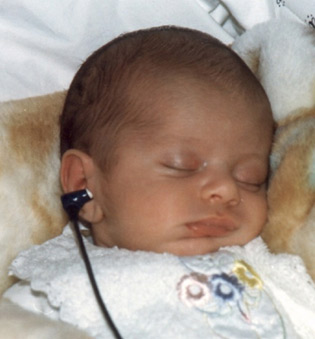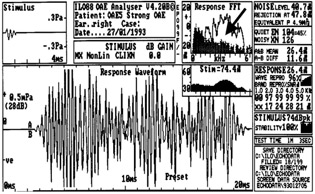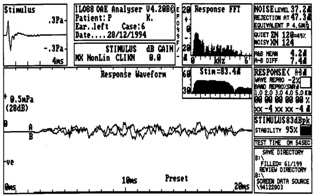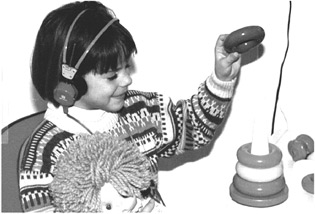Examination of hearing in infants and children (Otoacoustic emissions and Play Audiometry)

Early diagnosis of child deafness is very important for its effective management and avoidance of severe consequences and complications. Recently there is a tendency towards screening all infants for deafness, with a simple and quick test, the Otoacoustic Emissions. We perform this test since the mid- 90’s, being the first private ENT office in Greece that installed this equipment. All that is needed for the test is a small probe, which is inserted into the child’s ear canal (see image). If the infant is quiet or asleep, the duration of the test is less than 30 seconds for each ear.
Normal result confirms normal function of the organ of hearing. If the result is abnormal, the test is repeated in one month’s time to confirm abnormal recording, and then middle ear function is tested with tympanometry. Infants with abnormal otoacoustic emissions and normal tympanogram must be tested with Auditory Evoked Potentials.



Older children, who can co-operate to play with the examiner, but are too young to have a proper audiogram, can be tested with some variant of play-audiometry. In the simplest form of it, the child is asked to do a move in play, when he/she hears a sound (see image).